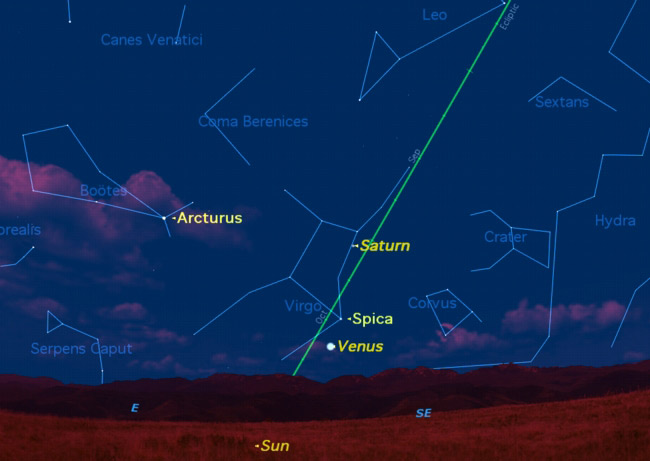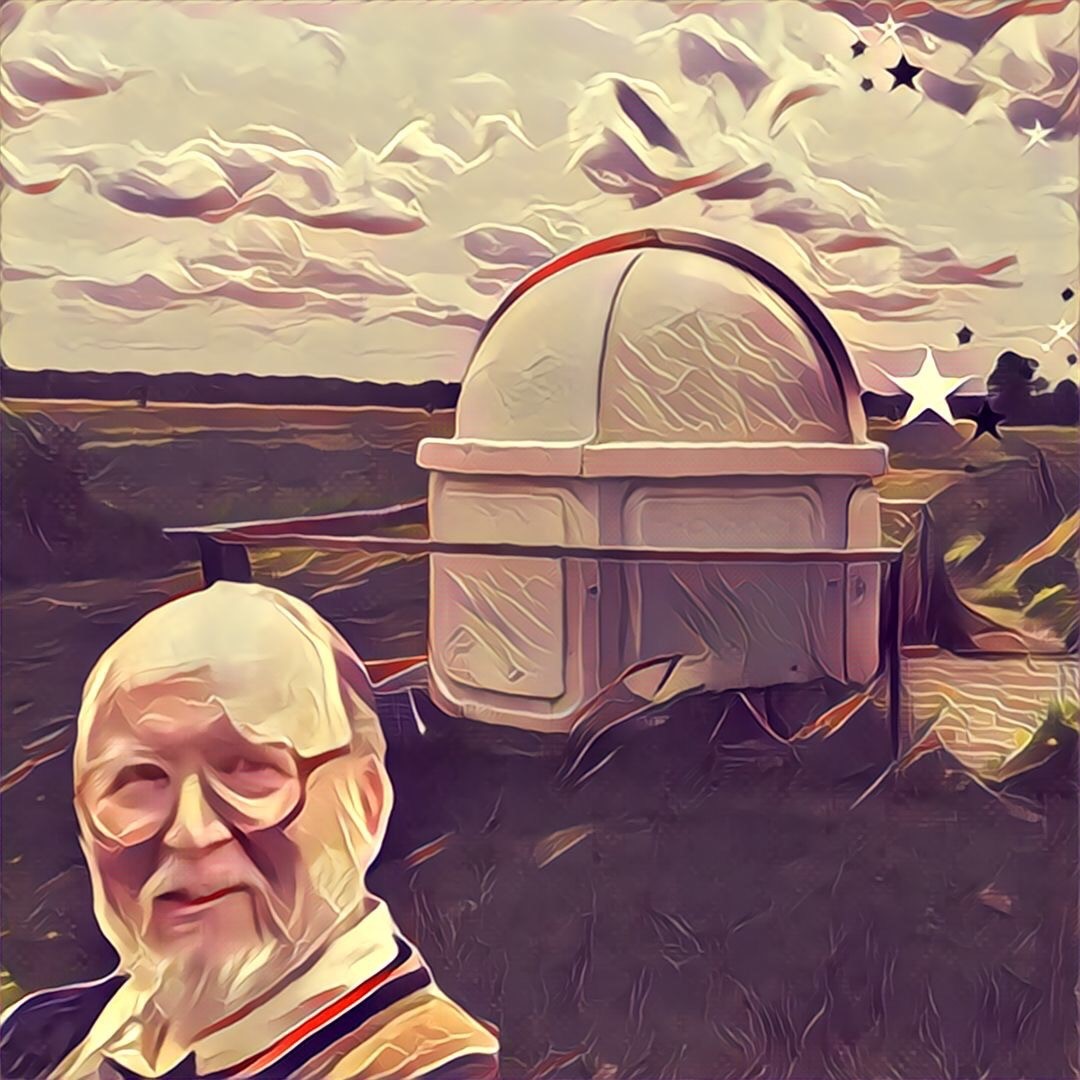Venus and Saturn Now Grace the Predawn Sky

Venus and Saturn, two bright planetary gems of the sky, hadbeen hiding from skywatchers in recent months, but they have returned with flairjust ahead of the rising sun.
In the complicated dance of the planets, both planetsappear from Earth to have moved west of the sun and both are now "morningstars" in the predawn sky, weather permitting.
This sky map shows where to look to see Venus and Saturnin the early-morning hours.
Even the most avid watchers of the sky probably haven?tseen either of these planets for a couple of months. Both have been hidingclose to the sun in our sky, but in very different locations.
Venus passed between the Earth and the sun two weeks agoon Oct. 29, in what is called an "inferior conjunction" with the sun.[Gallery:Spectacular Venus Photos]
The planets rarely align exactly, but Venus was only 6degrees south of the sun at that time ? for all intents and purposes, totallylost in the sun?s glare. For comparison, the width of your fist held at arm'slength takes up about 10 degrees of the night sky.
Saturnis a different story. On Oct. 1, it passed almost behind the sun, in what iscalled a "superior conjunction." It was only 2 degrees north of thesun on that date.
Breaking space news, the latest updates on rocket launches, skywatching events and more!
How to see Venus and Saturn
To find Venus and Saturn, go out about half an hour beforesunrise any day this week and look a bit south of east.
If your skies are clear, the most obvious thing you willsee will be brilliant Venus low on the horizon. Through binoculars or a smalltelescope, Venus will appear as a tiny slender crescent, since it is stillalmost completely back-lit by the sun just below the horizon.
About 5 degrees (one binocular field) above Venus is thefirst-magnitude star Spica in the constellation Virgo. About 12 degrees (twobinocular fields) above that is Saturn.
If Saturn looks a bit brighter than when you saw it last,you?re not mistaken. Saturn?s rings, which have been almost edge-on to theEarth for the last two years, are now starting to tilt toward the Earth, andthis has a striking effect on the planet's brightness to the naked eye.
Saturn's rings through telescopes
If you have access to a small telescope, take a look atSaturn. Its magnificentrings have now opened up so that it looks its old self.
Skywatchers should also look for the moons nearby Saturn.Titan, Saturn's largest moon, is visible in even the smallest telescope, andfour more moons can be seen with larger amateur telescopes: Rhea, Dione, Tethysand Iapetus. Use a planetarium program on your computer to identify them.
Both Spica and Saturn are of first-magnitude brightness,but noticeably dimmer than the star Arcturus in the east, and much dimmer thanVenus.
Venus and Saturn will grace our morning sky for most ofthe winter months, but this week is your first chance to welcome them back.
- Gallery:Stunning Venus Photos, Saturnand its Moons
- Telescopesfor Beginners
- NewlyDiscovered Fast-Changing Comet Visible in Small Telescopes
This article was provided to SPACE.com by Starry Night Education,the leader in space science curriculum solutions.

Geoff Gaherty was Space.com's Night Sky columnist and in partnership with Starry Night software and a dedicated amateur astronomer who sought to share the wonders of the night sky with the world. Based in Canada, Geoff studied mathematics and physics at McGill University and earned a Ph.D. in anthropology from the University of Toronto, all while pursuing a passion for the night sky and serving as an astronomy communicator. He credited a partial solar eclipse observed in 1946 (at age 5) and his 1957 sighting of the Comet Arend-Roland as a teenager for sparking his interest in amateur astronomy. In 2008, Geoff won the Chant Medal from the Royal Astronomical Society of Canada, an award given to a Canadian amateur astronomer in recognition of their lifetime achievements. Sadly, Geoff passed away July 7, 2016 due to complications from a kidney transplant, but his legacy continues at Starry Night.
